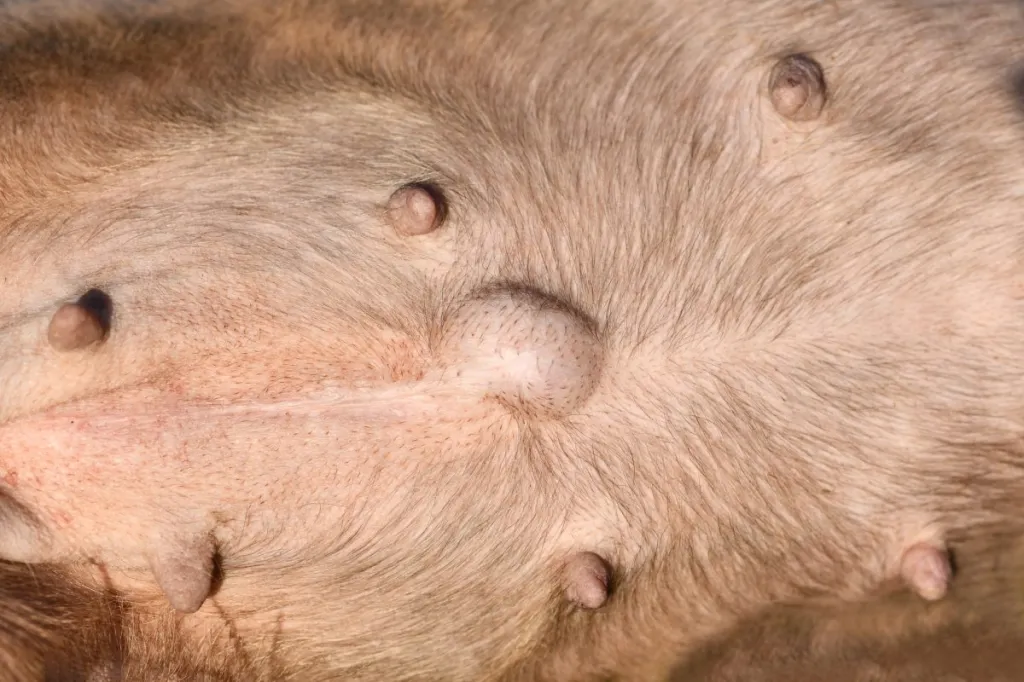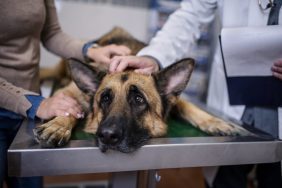Hernias in dogs are tears or weaknesses in abdominal muscles that allow internal organs or fatty tissue to pass through to other parts of the body. There are five main types of hernias that affect canines, which include hiatal, umbilical, diaphragmatic, inguinal, and perineal hernias. Depending on the type, hernias can be somewhat mild or life-threatening if the condition goes untreated.
If you see the signs of a hernia in your dog, then you must consult your veterinarian. Here’s what you should know about the types, symptoms, and treatments for hernias in dogs.
Types of hernias in dogs
Five types of hernias affect different organs and areas of the body, although they all affect parts of the abdomen. Over 90 percent of hernias are the result of genetics, though physical trauma and injury do sometimes cause hernias.
The following are the five types of hernia a dog may suffer from:
- Hiatal hernias develop when part of the stomach pushes into the diaphragm where the stomach and esophagus meet. The esophagus moves into the stomach, and stomach contents pass through the diaphragm.
- Umbilical hernias are usually seen in puppies around two weeks of age, and they are caused by genetics. It’s the most common type of hernia, and it appears as a protrusion where the belly button usually is. Intestines or fat move through an opening under the skin, causing the protrusion. Sometimes they heal on their own, and sometimes they require surgery to remove. They can cause serious complications if they aren’t treated.
- Diaphragmatic hernias occur when a hole in the diaphragm allows the liver or stomach to pass through the chest cavity where the lungs are. This makes it difficult for dogs to breathe.
- Inguinal hernias happen in the groin area on the inner wall of the rear leg where it meets the body. If the tear is large enough, parts of the intestines, the bladder, or the uterus can move into the hernia, which can be deadly if left untreated.
- Perineal hernias occur when the contents of the abdomen move through a tear in the pelvis to the area near the anus. It happens more often in male dogs over five years old.
Symptoms of hernias in dogs
Some dogs experience no signs of discomfort or illness with hernias. Other dogs will develop severe, life-threatening symptoms depending on which organs are affected. Most noticeably, hernias usually appear as a soft mass that is shaped like a bubble.
Here are a few of the symptoms you might see when your dog has a hernia:
- Loss of appetite
- Vomiting food or water
- Drooling
- Cramping
- Fever
- Shortness of breath
- Numbness in the legs
- Coughing
- Lethargy
Treatments for hernias in dogs
Treatment for hernias in dogs usually aims to put the herniated tissue back in place and repair the muscle tear, often by suturing it closed. This is the case when the hernia is reducible.
Your veterinarian may also give antacids and other medical treatment to prepare. As with most medical conditions, the earlier the hernia is detected, the better the chances are that it can be treated.
Non-reducible hernias happen when tissue has grown together because of swelling or when tissue is so pushed through the tear that it can’t be pushed back into place. Sometimes a strangulated hernia can develop, which cuts off the blood supply. In these cases, surgery is necessary to fix the issue. While your dog is healing, you may need to make several dietary changes until digestion can return to normal.
Prevention of hernias is, for the most part, not possible because the condition is mostly hereditary. Taking precautions to avoid serious injury may help to avoid trauma-induced hernias. Neutering and spaying puppies can help further reduce the risk that they will develop the same hernias that their parents had.









